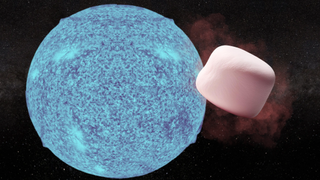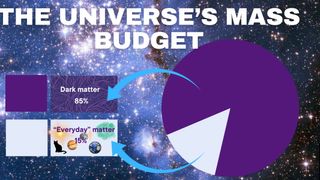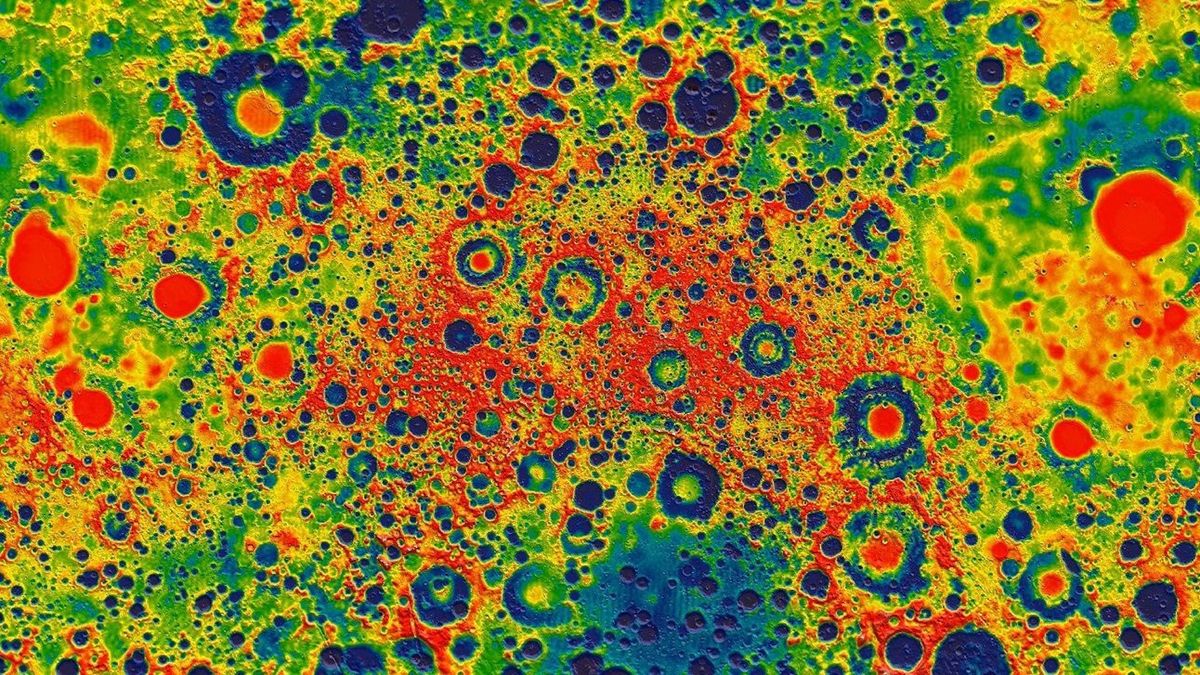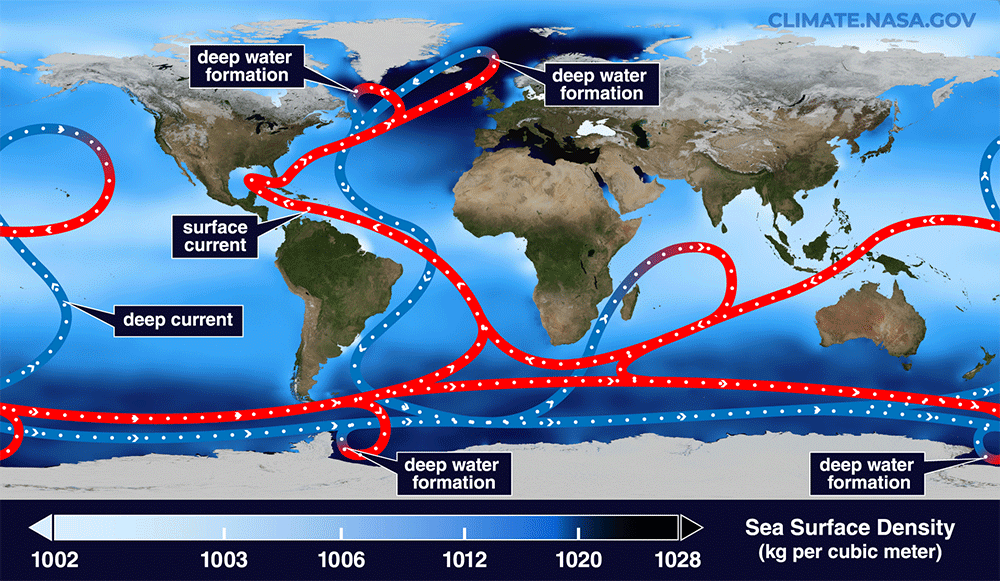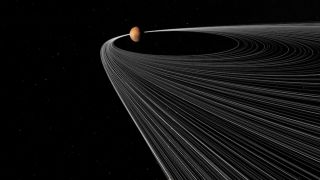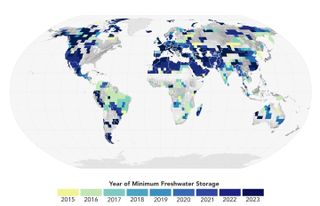During the summer of 2022, just after the James Webb Space Telescope started sending us a steady stream of deep-space postcards, astronomer Stephen Finkelstein and his team found a mysterious red splotch in one of those data deliveries. They’d spotted one of the earliest galaxies humans have ever laid eyes on — a realm that represented a distant pocket of the universe our species once couldn’t dream of seeing. And, importantly, they found it on Finkelstein’s daughter’s birthday, a serendipity that blessed this blob with a name: Maisie’s Galaxy. But…
Read MoreTag: The Universe
Mysterious fast radio bursts could be caused by asteroids slamming into dead stars
Scientists have discovered that mysterious blasts of energy called fast radio bursts (FRBs) may be created when asteroids slam into ultradense extreme dead stars called neutron stars. Such a collision releases enough energy to supply humanity’s power needs for 100 million years! FRBs are transient pulses of radio waves that can last from a fraction of a millisecond to a few seconds. In this period, an FRB can release the same amount of energy that it would take the sun several days to radiate. The first FRB was observed in…
Read MoreCould dark matter have been forged in a ‘Dark Big Bang?’
Our common understanding of the universe tells us that all matter and energy were created at the beginning of time during a period of rapid inflation called the Big Bang. However, in 2023, Katherine Freese, director of the Texas Center for Cosmology and Astroparticle Physics, and Martin Wolfgang Winkler of the University of Texas suggested a radical new idea: a “second Big Bang.” This “Dark Big Bang” would have given rise to the universe’s most mysterious “stuff,” known as dark matter. Now, two scientists from Colgate University have expanded on…
Read MoreChina reveals secrets of 1st sample taken from the far side of the moon — and it contains a volcanic surprise
The first analysis of lava samples from the moon’s far side reveals that volcanoes were erupting there 2.8 billion years ago. The moon is tidally locked with Earth, meaning the same side always faces our planet. The far side is less explored than the near side. Only two landers, both from China, have made it to the moon’s far side. In a study published Nov. 15 in the journal Science, researchers analyzed rock samples returned to Earth by the Chang’e 6 lander. The 2024 mission brought back a little over…
Read MoreHubble Telescope peeks at star with planet-forming disk that gets 3 times hotter than the sun
A star about 1,360 light-years away from Earth, named FU Orionis, is twice as hot as astronomers previously suspected, according to recent data from the Hubble Space Telescope. In fact, scientists believe that the region where FU Orionis’s planet-forming disk touches the star’s surface glows at around 16,000 Kelvin — three times hotter than the surface of our sun. Caltech astronomer Adolfo Carvalho and his colleagues suggest the area around the star is so surprisingly hot because a rapidly-spinning disk of material falling into the star is actually scraping against…
Read MoreDeclassified spy satellite images reveal 1,400-year-old battle site in Iraq that set off the Muslim conquest
Declassified spy images of Iraq have helped archaeologists find a historic Islamic battlefield. Upon analyzing the images, which were taken in 1973 by a U.S. satellite system named KH-9 (Hexagon), the team found remnants of a 1,400-year-old settlement. This helped them match the site to the lost location of the Battle of al-Qadisiyyah, the researchers reported in a study published Nov. 12 in the journal Antiquity. The Battle of al-Qadisiyyah took place in A.D. 636 or 637 between the Arab Muslim army and the Sasanian Empire, which ruled the area…
Read MoreThis spot will be key to the inevitable collapse of a key Atlantic current
Scientists have pinpointed the ocean engine with the biggest role in driving key Atlantic currents that regulate Earth’s climate, new research suggests. The Irminger Sea off southeastern Greenland is where warm waters that transport heat northwards from the Southern Hemisphere sink and then return south along the bottom of the ocean. As such, this region plays a critical role in powering the ocean conveyor belt known as the Atlantic Meridional Overturning Circulation (AMOC). “The key finding of this study is that the Irminger Basin (eastern Greenland) plays a crucial role…
Read MoreMars may have made its 2 moons by ripping an asteroid apart
Computer simulations suggest that Mars’ puzzling moons, Phobos and Deimos, may have been formed from debris created when a large asteroid wandered dangerously close to the Red Planet. This new model proposes that Phobos and Deimos resulted from the wreckage of a larger asteroid that wandered too close to Mars and crossed its Roche limit — the distance at which gravitational tidal forces emanating from the planet became too great and tore the asteroid apart. “It’s exciting to explore a new option for the making of Phobos and Deimos —…
Read MoreStrange ‘zebra’ patterns are coming from the Crab Nebula — this physicist finally figured out why
Historical records from around the world describe a bright star appearing in the sky in the year 1054. Today, astronomers are confident that what our ancestors were seeing was, in truth, a star that had gone supernova. But this wasn’t just any supernova. It was a supernova that would eventually lead to the formation of the Crab Nebula — a collage of interstellar gas and dust illuminated by the energy expelled during the death throes of a rapidly contracting nuclear furnace.The star in question would eventually become a pulsar —…
Read MoreNASA satellites reveal Earth’s continents are getting drier
The amount of freshwater found on our planet has dropped significantly in the last decade, NASA satellites have found. An international team of scientists reviewed observations taken by the Gravity Recovery and Climate Experiment (GRACE) satellites operated by NASA, the German Aerospace Center and the German Research Center for Geosciences. The data collected by GRACE revealed that beginning in May 2014, there was a plunge in Earth’s freshwater supply, and the planet has still not recovered. The researchers suggest that this evidence could also mean Earth is undergoing a drier…
Read More
